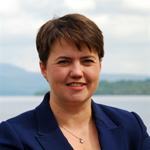
Division Voting information
Debates during the 2024 Parliament
Speeches made during Parliamentary debates are recorded in Hansard. For ease of browsing we have grouped debates into individual, departmental and legislative categories.
Sparring Partners
View All Sparring PartnersDepartment Debates
View All Department DebatesLegislation Debates
Baroness Davidson of Lundin Links has not made any spoken contributions to legislative debateLords initiatives
These initiatives were driven by Baroness Davidson of Lundin Links, and are more likely to reflect personal policy preferences.
Baroness Davidson of Lundin Links has not introduced any legislation before Parliament
Baroness Davidson of Lundin Links has not co-sponsored any Bills in the current parliamentary sitting
Latest 4 Written Questions
(View all written questions)2 Department for Work and Pensions Questions
(View all Baroness Davidson of Lundin Links's DWP questions)Across the NHS in England there are services supporting people with post-COVID syndrome (long COVID). These services offer physical, cognitive and psychological assessment, and, where appropriate, refer patients onto existing services for treatment and rehabilitation.
To support clinical leadership in this area, NHSE has worked in partnership with the British Society of Physical and Rehabilitation Medicine to develop a new Clinical Post-COVID Society to facilitate the ongoing sharing of best practice to support people affected by long COVID. More information about the Society can be found at the following link: https://www.clinicalpcs.org.uk.
The UK Government has also invested over £57 million into long COVID research. The projects aim to improve our understanding of the diagnosis and underlying mechanisms of the disease and the effectiveness of both pharmacological and non-pharmacological therapies and interventions, and to evaluate clinical care.
Recent government-funded research from the National Institute for Health and Care Research estimated the economic impact on the UK at the time of the study (March 2023) as £5.7 billion from those with long COVID unable to work as before. More than half of respondents worked fewer hours or stopped working and on average had a 25% drop in earnings or nearly £11,000 each. The Department has made no assessment of the future impact of long Covid on economic productivity and workforce participation.
Minister of State (Department for Work and Pensions)
The Department does not have an estimate of the cost to the economy per year of people unable to work due to long Covid. Recent government-funded research from the National Institute for Health and Care Research estimated the economic impact on the UK at the time of the study (March 2023) as £5.7 billion from those with long COVID unable to work as before, based on the total duration of long COVID symptoms.
Minister of State (Department for Work and Pensions)
2 Ministry of Defence Questions
(View all Baroness Davidson of Lundin Links's ministry-of-defence questions)The current strength (as at 1 January 2025) of the UK Armed Forces is 180,779 which includes:
- All UK Regular personnel and all Gurkha personnel (77.6 per cent of UK Service Personnel, (SP)).
- Volunteer Reserve personnel (17.7 per cent of UK SP).
- Other Personnel including the Serving Regular Reserve, Sponsored Reserve, Military Provost Guard Service, Locally Engaged Personnel and elements of the Full-Time Reserve Service (4.7 per cent of UK SP).
The strength of each of the Services, including Regular Forces, Volunteer Reserves and Other Personnel is:
- Royal Navy/Royal Marines - 37,601.
- Army (also including Gurkhas) -108,413.
- Royal Air Force is - 34,765.
The gender of Armed Forces personnel (as at 1 October 2024) is as follows:
- Male – 147,570.
- Female – 21,420
Gender figures are for Regular and Future Reserve 2030 Forces only; data regarding other categories of SP is not available.
Minister of State (Ministry of Defence)
I refer the Noble Baroness to the response given by the Minister for the Armed Forces last November (Question 11998).
Minister of State (Ministry of Defence)